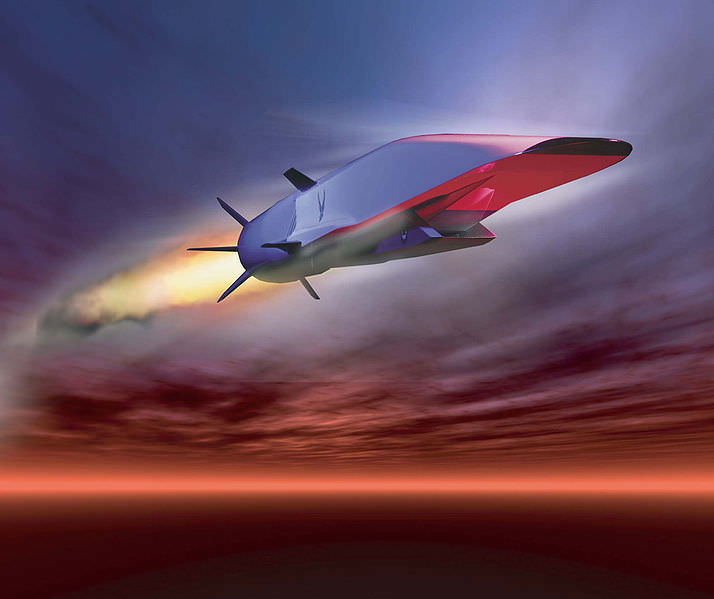The X-51A Waverider hypersonic scramjet project is set for its second test flight today, and the U.S. Air Force hopes it will demonstrate technology that can eventually be used for more efficient transport of payloads into orbit. The craft will be carried to 15,240 meters (50,000 ft.) by a B-52 from Edwards Air Force Base in California, and be dropped over the Pacific Ocean. A booster rocket will fire, getting the Waverider to Mach 4.5; then the scramjet will kick in, and designers hope it will reach Mach 6 or more.
The X-51 Waverider program is a cooperative effort of the Air Force, DARPA, NASA, Boeing and Pratt & Whitney Rocketdyne.
In May 2010,
the first test of the vehicle
had sort of a "successful" flight of 200 seconds of autonomous flight, which set a duration record for an aircraft powered by a scramjet (short for "supersonic combustion ramjet") engine. However, it was hoped that the X-51A would fly for as long as 300 seconds (or 5 minutes) and reach Mach 6. But during that flight, the Waverider suddenly lost acceleration, and the vehicle was "terminated" (destroyed – as planned, the Air Force said) while moving at Mach 5. The loss of acceleration was attributed to a design flaw, which led to hot exhaust gas leaking from the engine into electronics bays.
[/caption]
The scramjet is an air-breathing engine, where intake air blows through its combustion chamber at supersonic speeds. This has been compared to lighting a match in a hurricane, and the concept has had limited success. The engine has no moving parts, and the oxygen needed by the engine to combust is taken from the atmosphere passing through the vehicle, instead of from a tank onboard, making the craft smaller, lighter and faster. Designers say it could reach speeds of anywhere from Mach 12 to Mach 24. Mach 24 is more than 29,000 km/hour (18,000 miles per hour.) This could cut an 18-hour trip to Tokyo from New York City to less than 2 hours.
Sources: NASA,
The Register
,
Spaceports
 Universe Today
Universe Today
